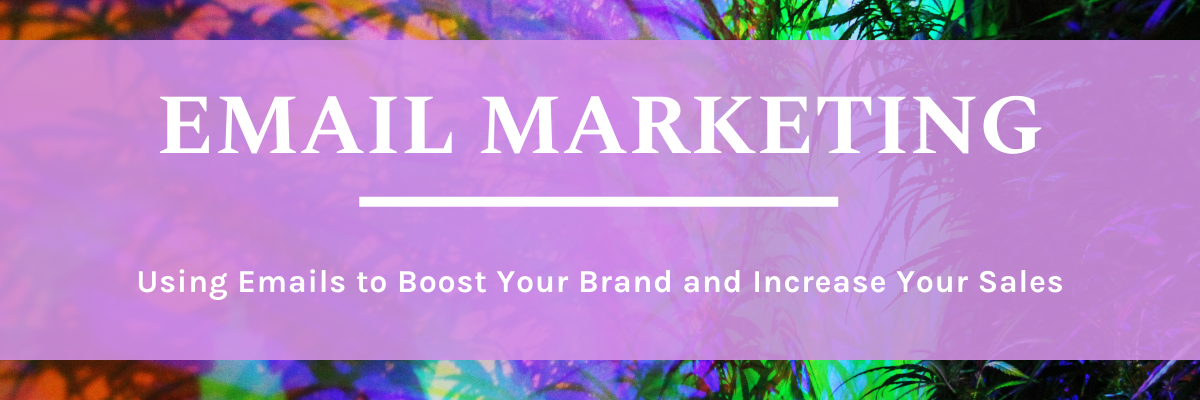Email marketing still has its role to play in today’s hyper-connected world. This is especially true if you’re in cannabis. Some days, it feels like you’re one post away from being removed from Instagram. Twitter goes too fast. Even Linked In is removing posts and banning accounts. And who has time for Tik Toks?
Kick it old school and rock your customer’s inbox: track who’s reading and what they clicked. The best part? Your account won’t get suspended because you used the “w” word… if you choose the right partner.

Why use email marketing services?
Using a service to send emails gives you a ton of insight on what marketing content works. Most small businesses will think of email marketing as the newsletter they send on a semi-regular basis. People equate email marketing to a time consuming chore that “has to be done.” You know, along with the 10 other tasks that you need to clear in a day.
I implore you to turn that thinking on its head.
The reason I offer both blogs and email marketing services is because the first feeds the second. You can then test out what gets good responses on the emails you send, and then divvy up that content onto your other channels.
The secret to great emails: Make them short
Transactional emails, the ROI King
But email marketing goes beyond the newsletter. When experts tout that crazy return on investment on emails (an ROI upwards of $30 for every dollar spent), they’re talking about transactional emails.
Abandoned cart emails, welcome emails, and notification emails that are sent to a single contact are transactional emails. You can send notifications to a bunch of people, obviously. However, as opposed to an email newsletter (also known as an email blast) transactional emails are sent given a specific set of circumstances (or rules). While you might send the same email – barring a few personalization aspects – to multiple people, each email is sent out one email at a time.
If I wanted to use big, impressive marketing words, I’d talk about Business Intelligence at this juncture. I’d talk about how these are incredibly valuable data points, and segmentation opportunities. Maybe I would mention how data analysts dream of how to leverage every single point of contact, and that some people make a great living doing just that. Instead, I’ll just say this: every single time a customer requests an email from you, you have their whole attention for 15 seconds.
Why aren’t you making the most of that opportunity?
Newsletters, old school email marketing
Then, there are the other emails. The ones that you prepare on a regular basis, with fresh content every time. In French, we call them infolettres, which translates to “Infoletters” – they’re letters (emails) used to send out information.
These can suck.
They can suck time, they can suck energy and quite frankly, if they’re not done right, they downright suck.
It’s easy to make your newsletters not suck though!
- Share your most popular social media posts for the year
- Send important information with your newsletters
- Use a template with a dedicated format week over week
- Keep them short: get people back to your website or your social media profiles
Your emails won’t all lead to an incredible boost in sales. Sometimes, you’re just going to create brand awareness, keep people engaged or let them know about what’s new with you.
The trick is to send information your contacts want to receive.

R-E-S-P-E-C-T
Learn what it means to your subscribers!
Ask for permission
Confirmation emails, welcome emails and regular opt-out campaigns help you keep interested people in your email contact list. These steps are incredibly important to measure your emails’ success and ensure that your emails land in people’s inboxes when you send them!
Frequency of your email marketing campaigns
Speaking of sending emails, how often should you send them? Well, that depends. As a retailer or salesperson with a dedicated list of customers to contact, once a week is a good baseline. Counterintuitively, sending more frequent emails (up to a maximum of once per day – please don’t spam) can be more effective – especially if you use an email sequence, based on actions your contact has taken, either on your website or when reading your emails.
I love sending the same email twice: the first time, I use a tried and tested template, with a subject line that I feel will have good returns. But a few days later, I’ll send the same content to the people who hadn’t read the initial email, with either a different subject, a different sender or a different layout.
